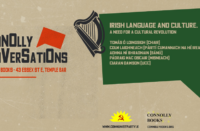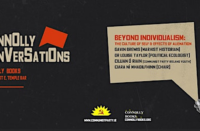This year saw a minor rise in electoral support in Ireland for the far right and poorly disguised criminal elements at the last local elections. These forces inserted themselves into community opposition and concerns about the establishing of various centres being set up by the state to house both those seeking international protection and refugees from Ukraine.
It is clear that the far right here and elsewhere are heavily influenced, funded and being given serious external material support, like the use of social media from forces largely promoted by US money and US-created or -owned social media platforms. Strategic disruption has been a central plank of US practice globally and in particular in Latin America. The EU has used and is using the far right as a disruptive force across the EU in order to consolidate its power and further centralising the control of the EU Commission.
This strategic disruption is used in conjunction with ruling classes locally that capitalise on it because they are allied to US and EU interests. A strategy to weaken any left alternative that might grow out of the obvious failures of capitalism to provide for the majority of people nationally and globally.
The Government, Gardaí and establishment media capitalised with intent on the rise of racism in Ireland. The state and its political parties, over the course of the local protests, began to realise what political capital could be accrued from the actions of the right and directed them to suit their objectives.
Communities already under great pressure resulting from the state’s social and economic strategy regarding housing, schools and health services turned to attacking the left critics of the system.
The state allowed the spread of racist ideas and encouraged racism by its double standards towards refugees from NATO’s proxy war in Ukraine and those seeking international protection.
The consequence has been that racists and the far right shifted local people genuine concerns away from the source of the problems, notably the government’s economic and social policies, that their communities have been greatly impacted by.
They managed to turn people’s anger not against those anti-people policies but to marginalise Sinn Féin in particular and the left in general within communities. Though that is not to absolve these parties for their own assimilation into establishment politics and electorialism. The net beneficiaries of this strategy has been the establishment and its political parties.
This was a clear strategy of strategic disruption carried out by the state and the government. A strategy to neutralise and marginalise alternative political forces and to side-track community opposition to government policies.
That strategic disruption continues to be applied in the run up to the next general election. The government is confident that it can control the far right, as they appear to have served their initial purpose, and are set to continue to use racism and immigration as keys strategic planks to sow division and confusion within working class communities.
The current Taoiseach, Simon Harris, continues to utilise strategic disruption by promoting racism, linking housing shortages to immigration, as he says the highest presentations to homeless services in Dublin this summer were people who were leaving direct provision having been granted asylum






